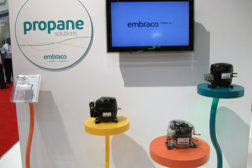Home » hydrocarbon refrigerants
Articles Tagged with ''hydrocarbon refrigerants''
Tecumseh Supports Hussmann in R-290 Application
Read More
HRAI Warns Fire Marshals of Flammable Refrigerant
Refrigerant Contains 'Extremely Flammable' Mixture of Propane and Isobutene
July 1, 2013
Seeking to Smooth Out Natural Refrigerants’ Rocky Road
IIAR Conference Addresses Path to Natural Refrigerants
Read More
Copyright ©2025. All Rights Reserved BNP Media.
Design, CMS, Hosting & Web Development :: ePublishing









